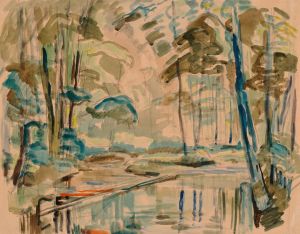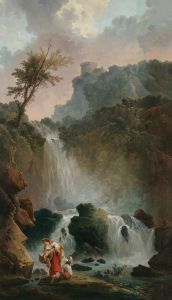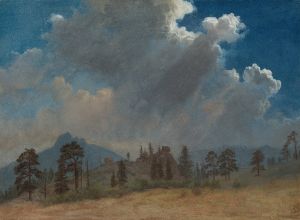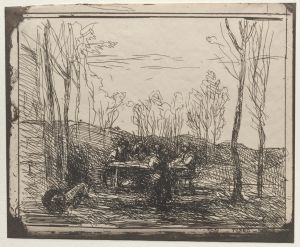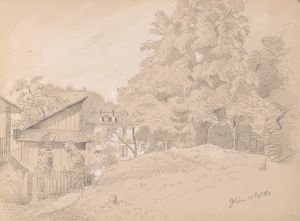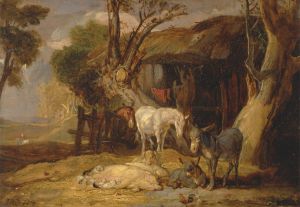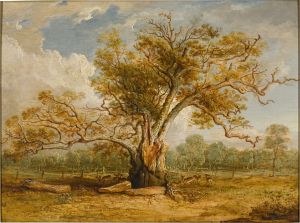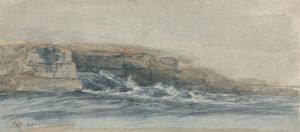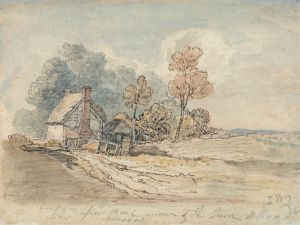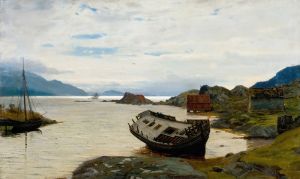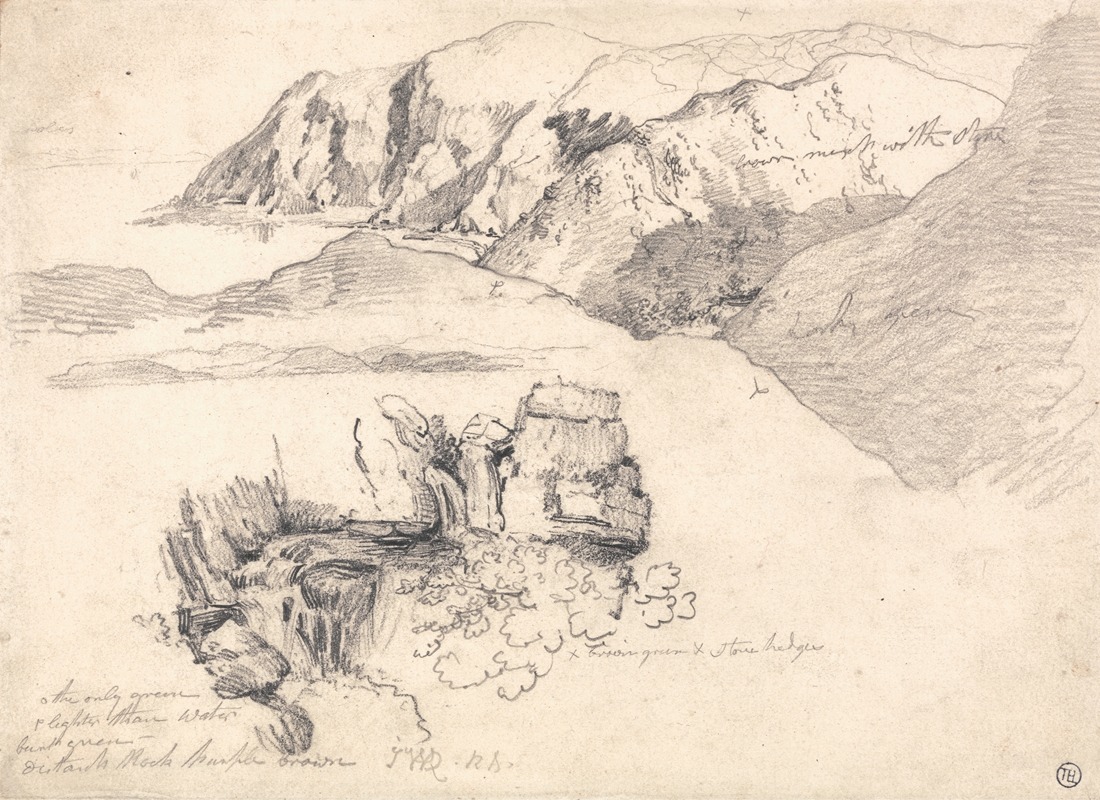
Studies of a Hilly Coast, and a Rocky Waterfall
A hand-painted replica of James Ward’s masterpiece Studies of a Hilly Coast, and a Rocky Waterfall, meticulously crafted by professional artists to capture the true essence of the original. Each piece is created with museum-quality canvas and rare mineral pigments, carefully painted by experienced artists with delicate brushstrokes and rich, layered colors to perfectly recreate the texture of the original artwork. Unlike machine-printed reproductions, this hand-painted version brings the painting to life, infused with the artist’s emotions and skill in every stroke. Whether for personal collection or home decoration, it instantly elevates the artistic atmosphere of any space.
"Studies of a Hilly Coast, and a Rocky Waterfall" is a notable work by the British artist James Ward, who was born on October 23, 1769, and died on November 17, 1859. Ward was a prominent painter and engraver, particularly known for his animal paintings and landscapes. His work is often associated with the Romantic movement, which emphasized the beauty and power of nature.
This particular piece, "Studies of a Hilly Coast, and a Rocky Waterfall," showcases Ward's skill in capturing natural landscapes. The painting is a study, meaning it was likely created as a preparatory work or an exploration of the subject matter rather than a finished piece intended for exhibition. Studies were commonly used by artists to experiment with composition, light, and texture before committing to a final work.
The painting features two distinct natural scenes. The first part of the study depicts a hilly coastline, characterized by rugged terrain and possibly the presence of the sea, though specific details about the exact location are not provided. The second part of the study illustrates a rocky waterfall, capturing the dynamic movement of water cascading over rocks. This dual focus on different natural elements highlights Ward's interest in diverse landscapes and his ability to render them with a high degree of realism and detail.
James Ward's background as an artist was influenced by his family and his early training. He was the younger brother of William Ward, a well-known engraver, and he initially trained under him. James Ward's early career involved engraving, but he later transitioned to painting, where he found significant success. He was appointed as an Associate of the Royal Academy in 1807 and became a full Academician in 1811, reflecting his esteemed position in the British art world.
Ward's work often reflected the Romantic era's fascination with nature's sublime and picturesque qualities. His landscapes, including "Studies of a Hilly Coast, and a Rocky Waterfall," are characterized by their attention to detail and the dramatic interplay of light and shadow. These elements work together to evoke a sense of awe and admiration for the natural world.
The painting is part of a larger body of work that includes other studies and finished pieces, many of which are held in public and private collections. Ward's contributions to art have been recognized for their technical skill and their ability to convey the emotional impact of natural scenes.
In summary, "Studies of a Hilly Coast, and a Rocky Waterfall" by James Ward is a testament to the artist's ability to capture the essence of natural landscapes through detailed and dynamic studies. Ward's work remains an important part of the Romantic movement in British art, celebrated for its depiction of the natural world's beauty and power.





